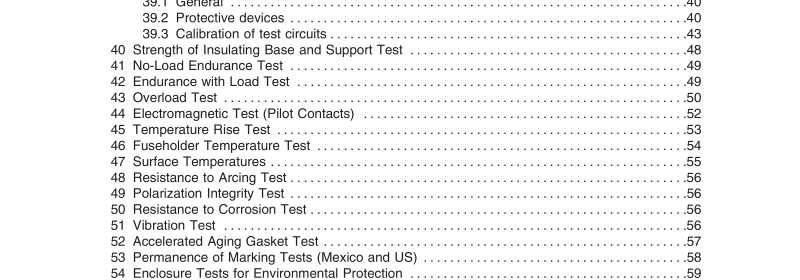CSA C22.2 NO. 282-17 pdf download – Plugs, receptacles, and couplers for electric vehicles.
1 Scope 1.1 These requirements cover EV plugs, EV receptacles, vehicle inlets, vehicle connectors, and EV breakaway couplings, rated up to 800 amperes and up to 600 volts ac or dc. These devices are intended for use with conductive electric vehicle supply equipment (EVSE), and are intended to facilitate the conductive connection from the EVSE to the vehicle. These devices are for use in either indoor or outdoor nonhazardous locations in accordance with Annex A, Ref. No. 1. 1.2 This Standard does not directly apply to any device that is not intended for use as described in 1.1. 1.3 In the text of this Standard, the term ″device″ refers to any product covered by this Standard. The letters ″EV″ refer to an electric vehicle, including plug-in hybrid vehicles, hybrid vehicles, electric vehicles, battery electric vehicles, and similar vehicles. 2 Definitions 2.1 For the purposes of this Standard, the following definitions apply. 2.2 BREAKAWAY COUPLINGS – A device located within a length of EV cable, between the electric vehicle supply equipment (EVSE) end and the vehicle connector end, that is intended to separate under a pull force, such that its separation will protect the end connections from a strain that could break wiring connections or rupture insulation. These devices are intended to be reconnectable, and may or may not be intended for current interruption. 2.3 CONTACT – A conductive element in a device that mates with a corresponding element in a mating device to provide an electrical conductive path.
2.4 CONTROL PILOT – The primary control conductor that is connected through the control circuitry. It may perform several functions, including assurance that the vehicle is present and connected, start/stop control, and supply equipment current rating; and it provides for continuous monitoring for the Personnel Protection System. 2.5 DELAYED ACTION – An arrangement that delays the separation of device housings to reduce the likelihood of exposure of arcing contacts during the breaking of the circuit when the EV plug or vehicle connector is withdrawn. 2.6 ENCLOSURE – The case or housing that is used to enclose all live parts and into which the insulator and contacts are assembled. 2.7 EV CABLE ASSEMBLY– A portable cable assembly consisting of a length of EV Cable and provided with a vehicle connector on one end and that may be provided with an EV plug on the other. 2.8 FIELD WIRING TERMINAL – A terminal to which power supply, control, or equipment grounding connections will be made in the field when the device is installed.
2.9 GROUNDED SYSTEM – A charging system that depends on reliable grounding of the circuitry to provide the basis for the Personnel Protection System. The ground connection is considered to be a protective earth connection, and the circuitry and conductors that make up the ground path are suitable for the potential ground fault currents expected for that product rating. 2.10 GROUNDING/BONDING CONDUCTOR – A conductor that is defined in Annex A, Ref. No. 1 (US and Mexico) as an equipment grounding conductor, and a conductor that is defined in Annex A, Ref. No. 1 (Canada) as a bonding conductor. 2.11 INSULATOR – That portion of a device that provides for separation and support of contacts. 2.12 ISOLATED SYSTEM – A charging system that depends on reliable isolation of the circuitry from all dead metal parts or circuits that can be contacted by the user. The isolation is monitored as part of the Personnel Protection System. The ground connection is not relied on for safety and is considered a functional or reference ground. The reference ground connection is used by the isolation monitor to monitor the isolation of the system. The functional or reference ground is not expected to carry ground fault current and, based on this, is not expected to be sized in accordance with the device rating. 2.13 PLUG, EV – A device intended to receive power when inserted into an EV receptacle. It establishes connection between conductors of the attached electric vehicle cable and the conductors connected to the EV receptacle. 2.14 RECEPTACLE, EV – A device that is intended to provide power to an inserted EV plug, and that is usually installed as a fixed outlet on equipment. These devices are not intended to be installed in building structures or as branch circuit devices. CSA C22.2 NO. 282-17 pdf download.
